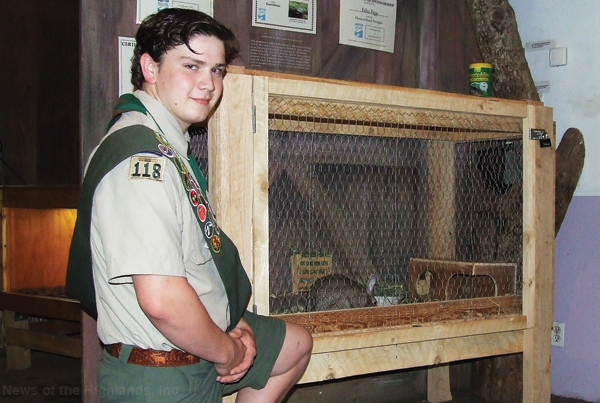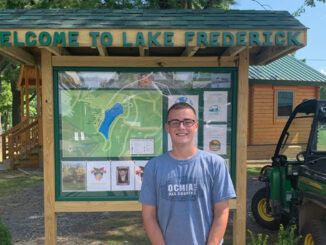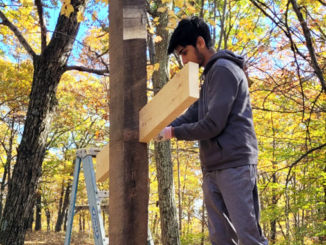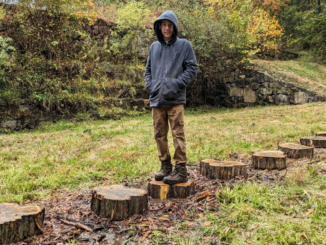
It might not be a deluxe apartment in New York City, but a few animals at the Hudson Highlands Nature Museum’s Wildlife Education Center are living in luxury after receiving an upgrade to their homes.
Tom Keller, a member of Cornwall’s Class of 2017, recently completed his Eagle project by constructing a new rabbit hutch, dove cage, and a shelving unit.
Keller explained his mother provides veterinary services to the animals at the museum, and having spent some time there he realized a need for new habitats.
“The dove cage was actually a parrot cage,” Keller said. “It was extremely small for the two doves they have. Then a third dove came in during the project, so the need was increased. It was poorly constructed. It wasn’t eye appealing. It was run down. The same thing for the hutch. It was time for an upgrade.”
Keller started planning the project in February by scheduling a meeting with the center’s manager, Emily Nestlerode. They discussed dimensions of the cage and hutch. Keller’s original estimate for the cage was larger than desired, so the size was toned down slightly. They settled on a cage measuring six feet high, three feet wide, and three feet deep. No changes were made to the hutch, which was four and a half feet high, four feet long, and a foot deep.
Nestlerode then mentioned the need for new shelves for the lower level of the museum. Keller’s original measurements were larger than the doorway to the center, so the unit had to be pared down to fit the six foot tall doorframe.
Before presenting his project to his scout master, and the Boy Scout Council, Keller drew the measurements of each structure, then completed the designs on his computer.
Seeking the assistance of 13 other scouts, friends, and family members, he began construction in early May. Doug Spaulding donated all the wood for the project, while Tractor Supply and Home Depot donated the hardware.
The wood was left in its natural state, providing a rustic look that blends with the rest of the museum.
Working nearly every weekend, and a few weekdays, Keller’s crew put in 150 man hours to complete the project.
One of the challenges Keller faced was directing his volunteers. All the cutting had to be done by adults because Boy Scout regulations preclude the use of power tools.
“At first I was skeptical on how well it would come out, but once it was done I realized it’s a very solid project,” Keller said. “It looks awesome. I’ve been told by all the museum staff it’s 10 times better than what was there before. It matches the rest of the museum better. It’s a lighter wood than what was there originally, so it brightens everything up. It’s very eye appealing. The functionality of the cages is much better. They’re easier to clean. They’re easier for the kids to see into them. It came together very nicely.”
Keller expects to receive his Eagle sometime in July.



